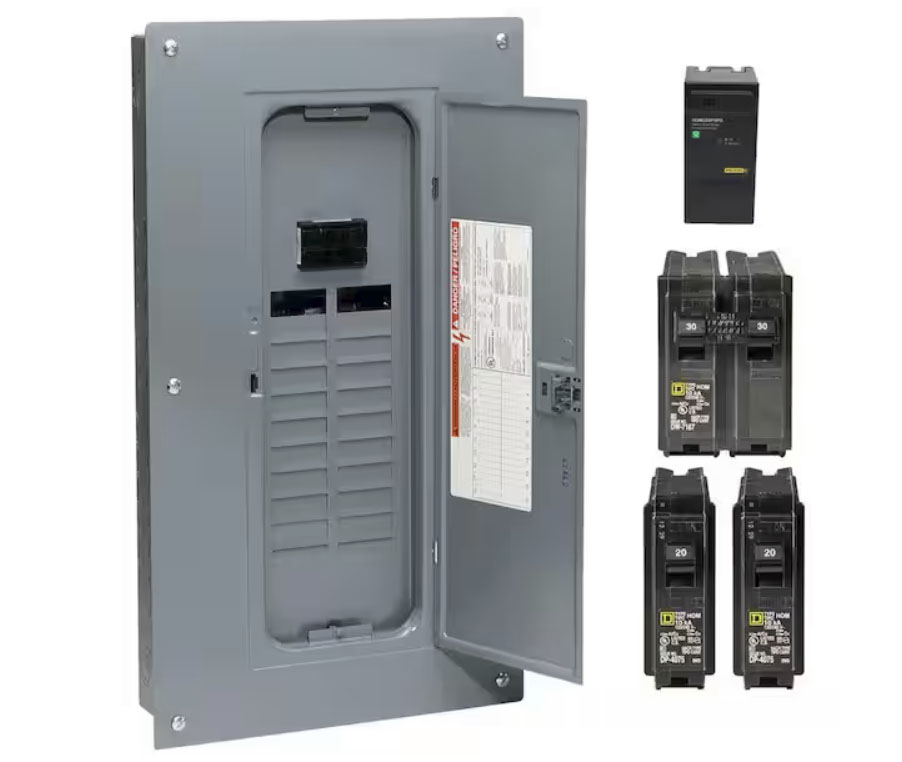How to Perform Professional Electrical Maintenance in Facilities in Orange County, California: Tustin, Brea, Orange, Placentia, Fullerton, Yorba Linda, Anaheim
Performing electrical maintenance in facilities requires expertise and adherence to safety standards. This guide will walk you through essential steps for professional electrical maintenance, ensuring safety and efficiency in Orange County, California, including Tustin, Fullerton, Brea, Orange, Placentia, Yorba Linda, and Anaheim.
Equipment and Tools Needed:
- Voltage tester
- Screwdrivers
- Wire strippers
- Grounding equipment
- Pliers
- Electrical tape
- Circuit breakers
- Disconnect switch
- Multimeter
- Proper gauge wire
- Electrical panel
Step-by-Step Electrical Maintenance Guide:
- Planning and Safety Precautions:
- Before starting any electrical maintenance, ensure you have the necessary permits from your local authority in Tustin. Compliance with local electrical codes is crucial.
- Turn off the main power supply using the main disconnect switch to prevent any accidental electrocution. Safety should always be your top priority.
- Use a voltage tester to confirm that the power is off before beginning any work. Always double-check to avoid any risk.
- Inspecting the Electrical Panel:
- Open the electrical panel and inspect for any signs of wear, corrosion, or damage. This includes checking the circuit breakers, wires, and connections.
- Tighten any loose connections to prevent electrical arcing, which can cause fires.
- Checking Circuit Breakers:
- Test each circuit breaker to ensure it is functioning correctly. Replace any faulty breakers to maintain the safety and efficiency of the electrical system.
- Label each circuit breaker to indicate the area or equipment it controls for easy identification during future maintenance or emergencies.
- Examining Outlets and Switches:
- Inspect all electrical outlets and switches in the facility. Look for signs of wear, such as discoloration, buzzing sounds, or warmth to the touch.
- Replace any damaged or worn-out outlets and switches. Ensure that all connections are tight and secure to prevent electrical hazards.
- Testing Ground Fault Circuit Interrupters (GFCIs):
- Test all GFCI outlets using the test button to ensure they trip correctly. GFCIs are crucial for preventing electrical shocks in wet areas like kitchens and bathrooms.
- Replace any faulty GFCI outlets immediately to maintain safety.
- Inspecting Wiring:
- Check the wiring for any signs of damage, wear, or degradation. This includes looking for frayed wires, exposed conductors, or insulation that is brittle or cracked.
- Repair or replace damaged wiring as needed to prevent electrical hazards.
- Maintaining Lighting Fixtures:
- Inspect all lighting fixtures for proper operation. Replace any burnt-out bulbs and check the wiring connections to ensure they are secure.
- Clean light fixtures to remove dust and debris, which can reduce efficiency and pose a fire hazard.
- Testing Emergency Lighting and Exit Signs:
- Ensure that all emergency lighting and exit signs are functioning correctly. These are crucial for safety during power outages or emergencies.
- Replace any non-functional lights or signs and check the backup power supply, such as batteries, to ensure they are charged and operational.
- Checking for Energy Efficiency:
- Evaluate the electrical system for energy efficiency. This includes checking for outdated appliances or fixtures that may be consuming excessive power.
- Recommend upgrades to energy-efficient appliances and lighting to the facility management, which can reduce energy consumption and lower utility bills.
- Documentation and Reporting:
- Document all maintenance activities, including any repairs or replacements made. This ensures a record is kept for future reference and helps in tracking the maintenance history.
- Provide a detailed report to the facility management, outlining the work performed and any recommendations for further improvements.
Common Issues and Troubleshooting:
- Frequent Tripping of Circuit Breakers: Check for overloaded circuits or short circuits. Ensure that the electrical load does not exceed the circuit capacity.
- Flickering Lights: Inspect the light bulbs and fixtures. Loose connections or faulty wiring can cause flickering.
- Dead Outlets: Test the outlet with a voltage tester. If there is no power, check the circuit breaker and reset it if necessary. If the problem persists, replace the outlet.
By following these steps, you can ensure professional and safe electrical maintenance in facilities in Orange County, California, including Tustin, Fullerton, Brea, Orange, Placentia, Yorba Linda, and Anaheim. This guide is tailored to meet the specific needs and regulations in these areas. Key terms like "electrical maintenance," "facility maintenance," "electrical safety," "circuit breakers," "grounding equipment," "GFCI outlets," "electrical panel," and "energy efficiency" are crucial for optimizing this content for search engines, making it easier for customers to find reliable information on professional electrical services.
For more information, contact CZ Electric at cz_electric@msn.com, visit CZ Electric, or call 714-264-3206.
Take a look at the full list of our Orange County commercial and industrial electrical services





